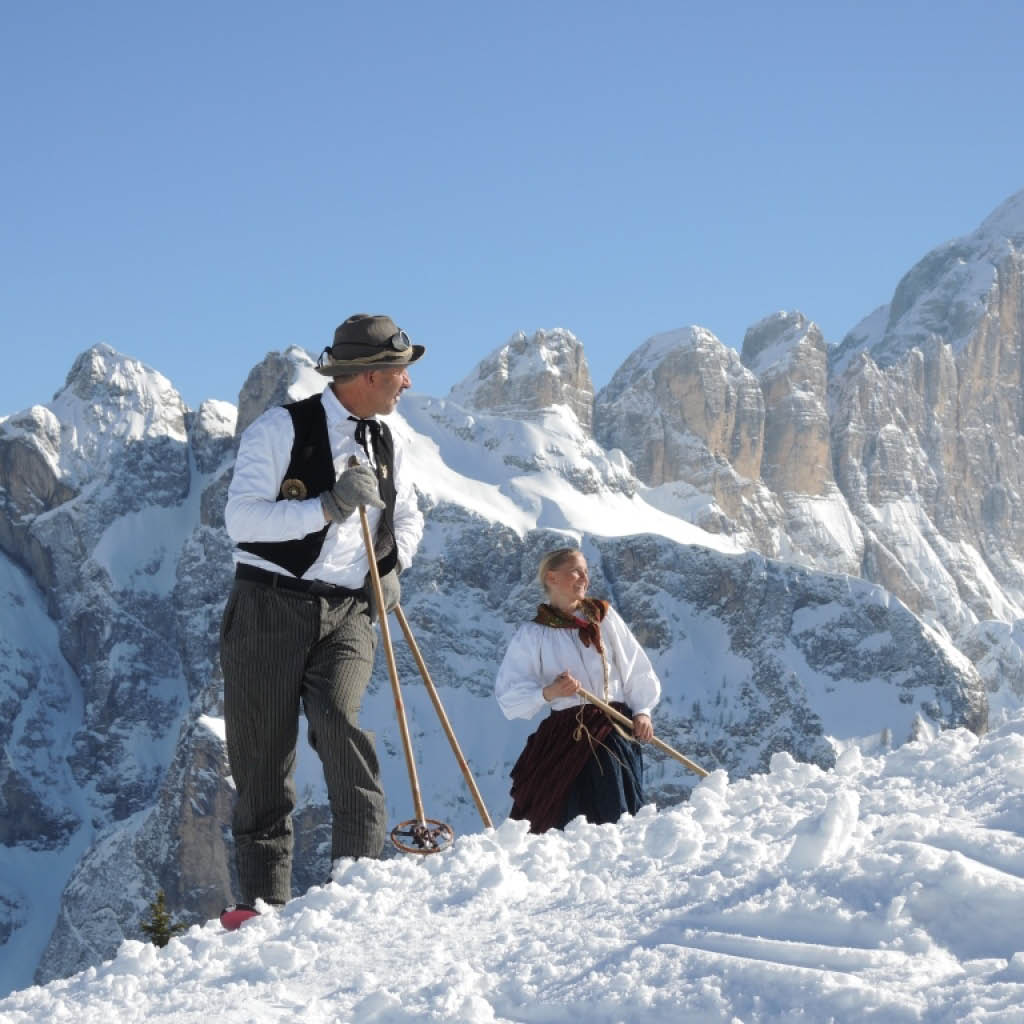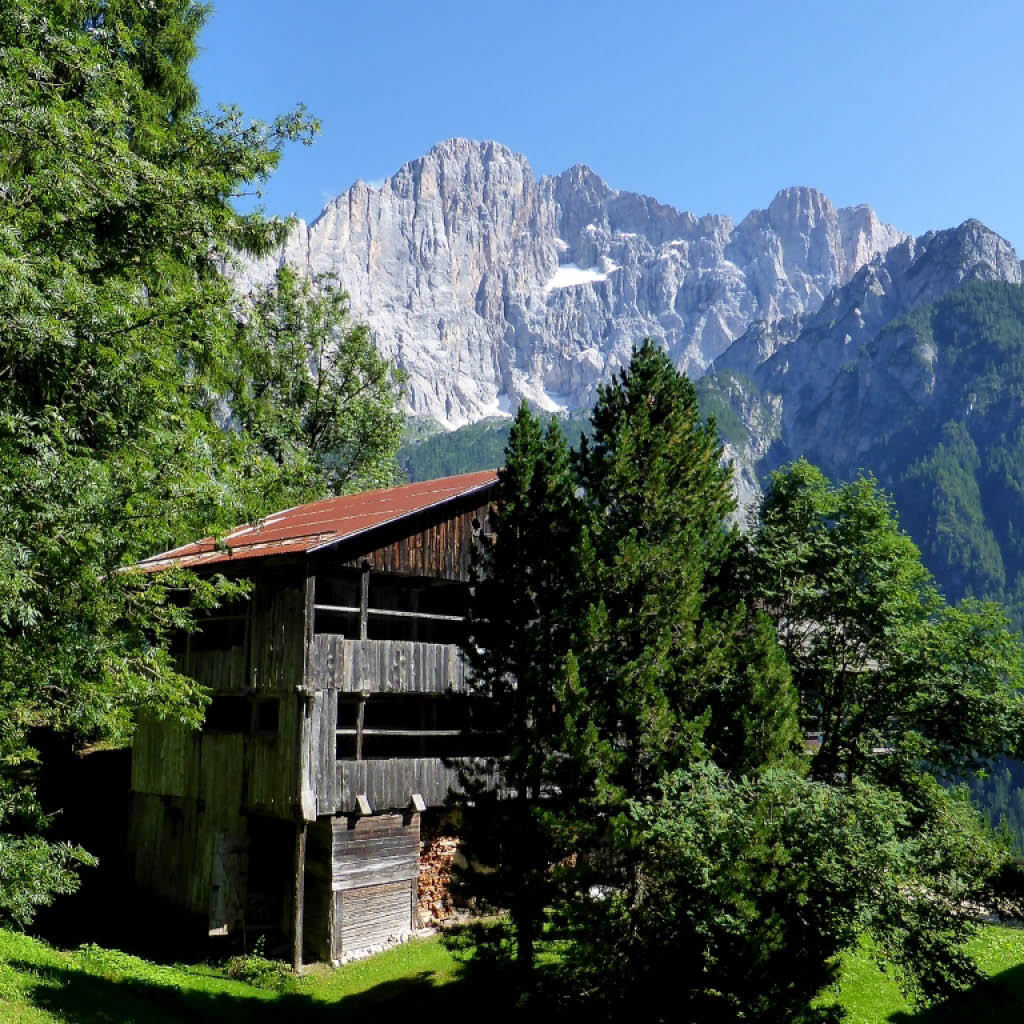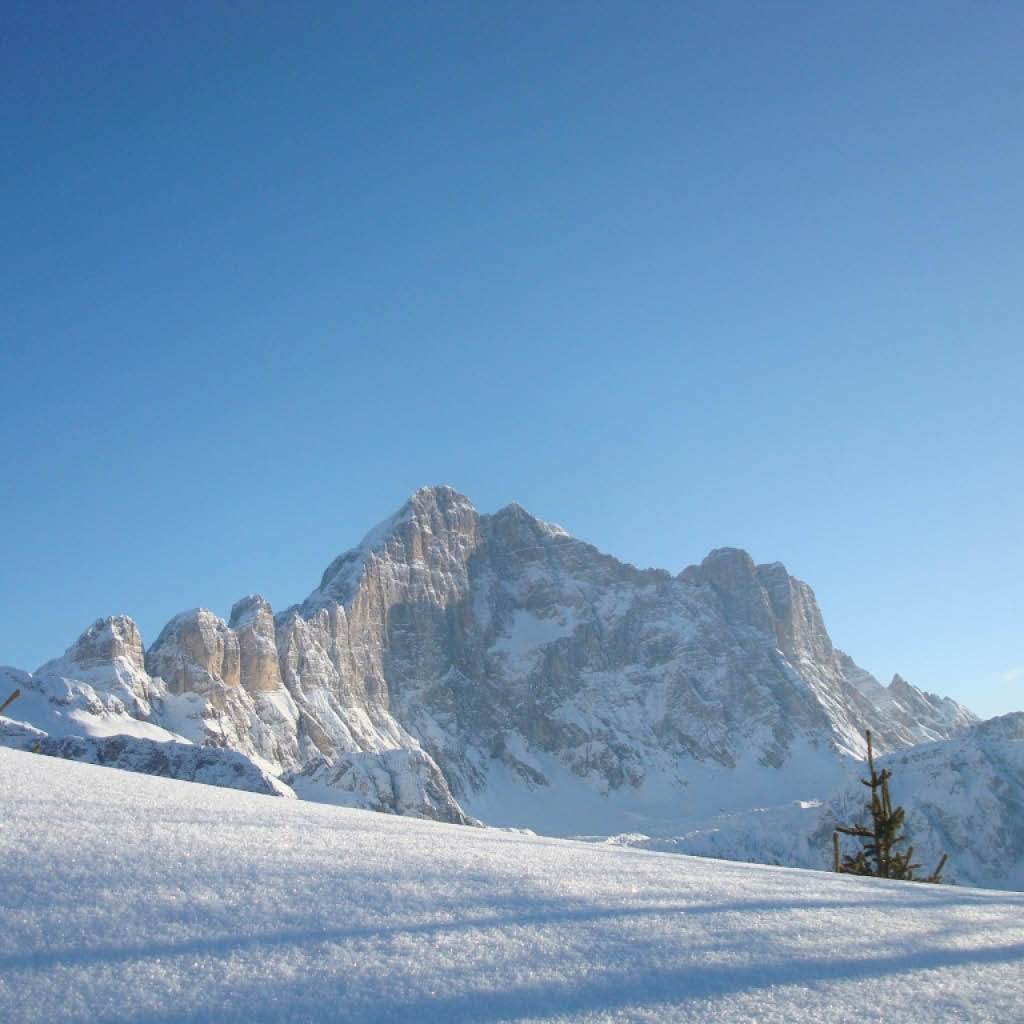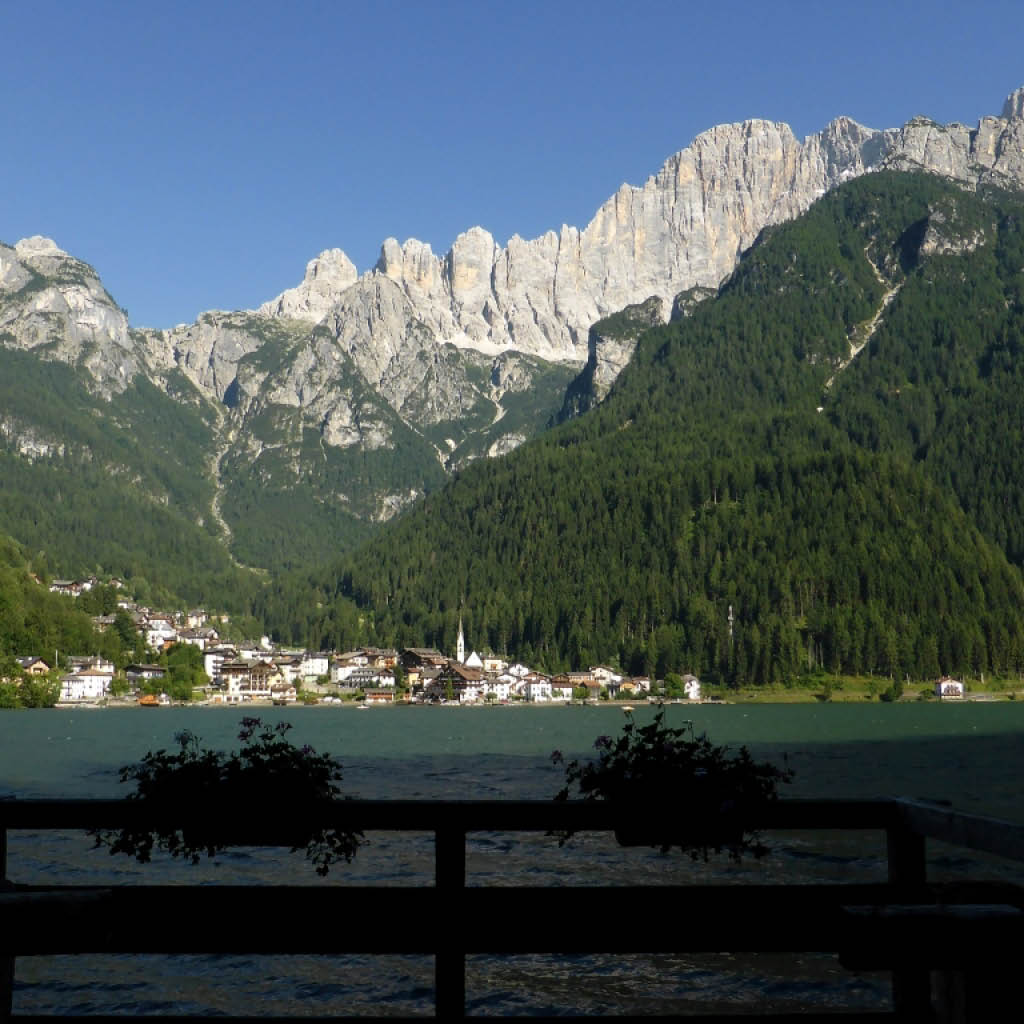


People say the dragon was seen flying just before the Monte Piz landslide which created Lake Alleghe. Many years have passed since then and the dragon has not been spotted since … the inhabitants can rest easy!





Lake Coldai is a lovely glacial lake lying between the slopes of Monte Coldai and the awe-inspiring northwest face of Monte Civetta. Its crystal clear waters are easy to reach with a walk which is suitable for the whole family: just take the ski lifts from Alleghe and in little over an hour you get to the famous refuge Sonnino al Coldai lying at 2132 m and, from there, the lake.
Once you have gone over the small pass above the refuge, you will be afforded a stunning view of Lake Coldai and the town of Alleghe down in the valley. A quick bite to eat on the shores of the lake is a must for visitors to Alleghe, then you can enjoy the magnificent views over the Marmolada and the northwest face of Monte Civetta, set off for the Tissi and Vazzoler refuges or even try one of the difficult climbs up Monte Civetta, “reign of the sixth grade”.